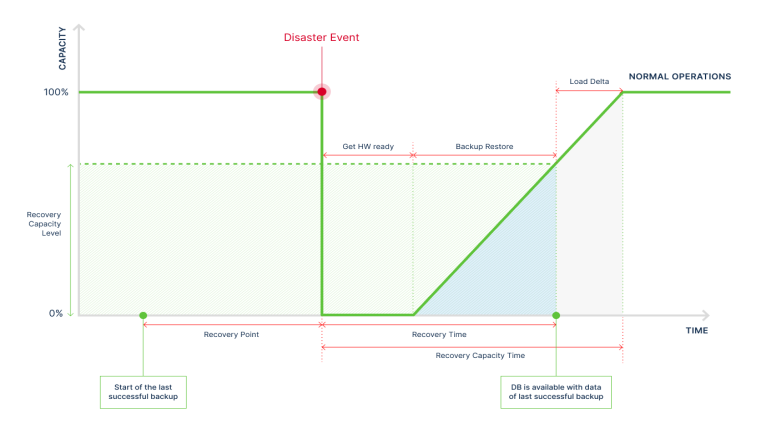This article explains common business continuity concepts and terms, and how they are implemented in Exasol.
Terminology
The following table describes some important business continuity terms:
| Term | Common definition | Exasol definition |
|---|---|---|
| Recovery time objective (RTO) |
The maximum acceptable duration of time that the business can be without a service before incurring significant risks or significant losses. RTO refers to the point in time in the future at which the service must be up and running again after a disaster. |
The duration of time from the disaster event until Exasol is up and running with data from the last successful backup. If a non-blocking restore is done, Exasol could be operational but with limited capacity while the last successful backup is being restored. |
|
Recovery point objective (RPO) |
Maximum acceptable amount of data loss, measured in time. RPO refers to the point in time in the past to which you will recover in the event of an outage. |
The maximum age of a database backup. |
|
Recovery capacity level (RCL) |
The capacity level that is available during emergency operations until the services are fully recovered. |
The capacity level where the database is up and running but may be slower than normal due to the loading of stored input transactions or background restore of backup data. |
|
Recover capacity time (RCT) |
Duration of time until the services are fully recovered. |
The duration of time from the disaster event until the database is running at full capacity. |
Business continuity timeline

At the point of a disaster event, the system experiences downtime and recovery efforts begin. Depending on the recovery plan for the system, there could be a time period where the replacement hardware is prepared. Once the hardware is ready, a restore of the last successful backup begins. During this period, it might be possible to use the system at a limited capacity. Once the backup has been restored, any data that was created after the last successful backup must also be loaded (if the system permits storing input transactions for a period of time).
